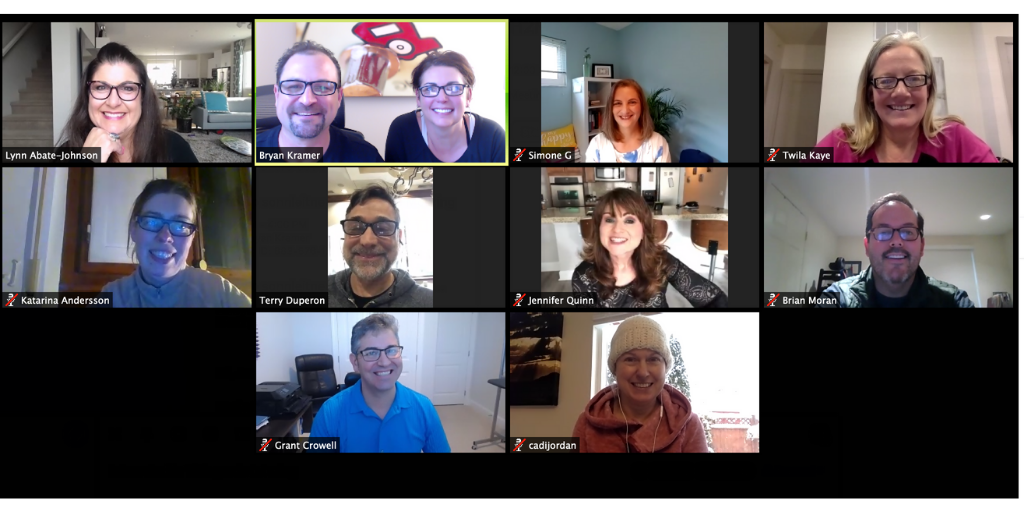Whether through your personal computer, smartphone, tablet, or video phone, you can stay ahead of the curve and retain a connection with your audience and clientele by improving your on-camera presence while working remotely by means of video calls.
With this turn of events and the dwindling of face-to-face and personal meetings, attention has now shifted to online meetings, more so video calls.
In order to maintain your market share, it is mandatory that you up your game in this medium by honing your skills. Here is how.
 1. Speak to The Client Not to The Camera Lens
1. Speak to The Client Not to The Camera Lens
Mastering this skill is quite a huge step towards improving your video meetings and presentations. If you are just adopting this technique, you may find yourself unsettled about having to stare at and speak to an empty lens in contrast to looking at your audience.
To increase enthusiasm, it is helpful to start the video call by imagining yourself talking to someone specific, such as a client. Address them as though they were present near you just on the other side of the camera.
Practicing this helps you improve the presentation by making it sound more genuine and engaging.
2. Appear Professional
In as much as you are working remotely, it is key to maintain the image that your clients and colleagues have of you. Dress for your subject and give thought to how your audience expects you to look.
That means you need to test your background. Does it distract or add to what you’re trying to say?
From your hairdo and make-up to what you are wearing, your audience gleans a lot from this.
Having properly done this, you can go about your business with more confidence, and your delivery and conversations appear professional.
3. Converse Gently and Briefly
In a video call, how you say something is just as important as the actual idea or information being put across to your audience.
In natural meetings and conversations, you might be tempted to speed up and speak too fast, which should not be the case during video-call meetings. To your audience, this might come off as nervousness, something that you do not want.
The clarity of your message is very key, and for that reason, you ought to be gentle and concise in communicating with your audience for you to attain the most desirable results.
4. Shun Scripting
It is highly advisable if you are just getting started on this medium of communication to try as much as possible to avoid a script. In trying to crack and master that on-camera presence, you do not want your audience to feel that you are not coming out as forthright.
If you are not well conversant with scripting, it could make your video meetings and presentations appear unprofessional.
It would be a good idea at first to shun the script and then come out genuinely to guarantee a good on-camera presence. Later on, with practice, scripting too could yield good results.
Familiarize yourself with details and your materials and then speak naturally as though you were having a conversation with that good friend or that reliable client for the best results.
5. Have Good Posture
Perhaps the biggest indicator and determinant to whether your presentation was a hit or a miss, posture is very important during video calls. Having good posture helps you to win yourself a decent on-camera presence.
Good posture allows you the luxury of appearing trustworthy and hands you a good degree of comfort; thus, you do not become nervous because the camera is rolling.
Practicing good posture habits away from the camera in normal daily life is a sure way to improve your posture.
Here are just but a few tips on bettering your posture:
- Do not hunch and let your shoulders fall back.
- Sway your hands as when you are naturally speaking.
- Use your hands to communicate and to show emotion.
6. Read The Room
To successfully nail that video meeting or presentation, it is important that you understand the underlying conversations and reactions people in the meeting are expressing. Reading between the lines is a very critical skill to effectively participate in the discussion and contribute your input during a video meeting.
During any presentation, it is important that you are aware of the effect you and the information you are presenting has on your audience. This skill comes in handy when you are constantly assessing how other people are responding to you.
Here are some ways to read the room during that meeting:
- Observe not just the other participant’s words but their body language as well.
- Control how much of the talking you are doing, don’t talk too much and strive to make the other parties feel heard.
- Keep your emotions in check, maintain a positive vibe and refuse to be hijacked by any negative energy that may emanate from the prevailing discourse.
- Shift the emotional reality of the room where need be. Try cooling things down whenever they flare up or get overly tensed.
In conclusion, it is quite crucial to equip yourself with these tips so as to remain relevant during these uncertain times that we are juggling with COVID-19.
By embracing these tips, you stand a chance to improve how you go about your video meetings and presentations, thus, perfecting your on-camera presence. Here are a few more tips on proper video conferencing etiquette.

 1. Speak to The Client Not to The Camera Lens
1. Speak to The Client Not to The Camera Lens



